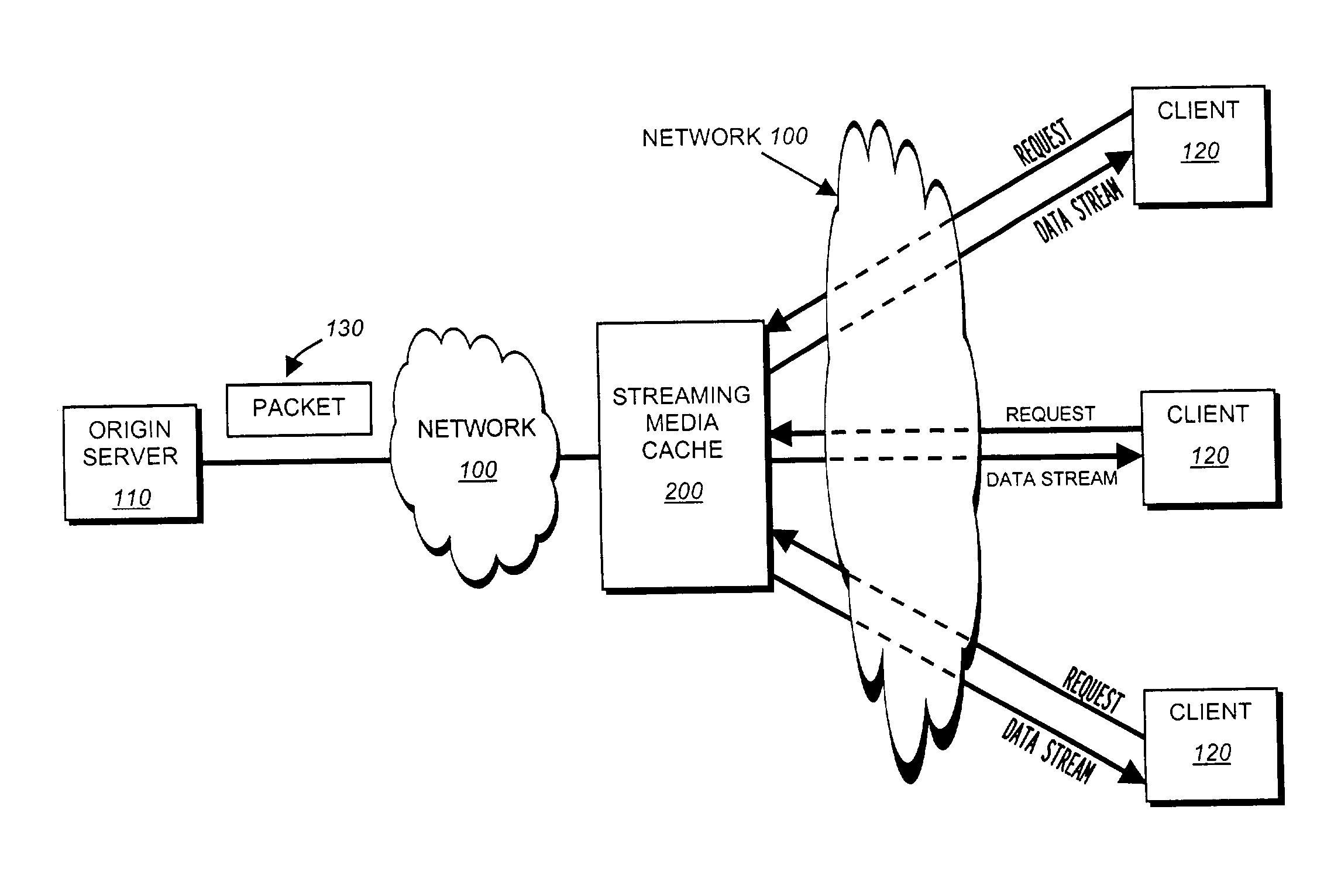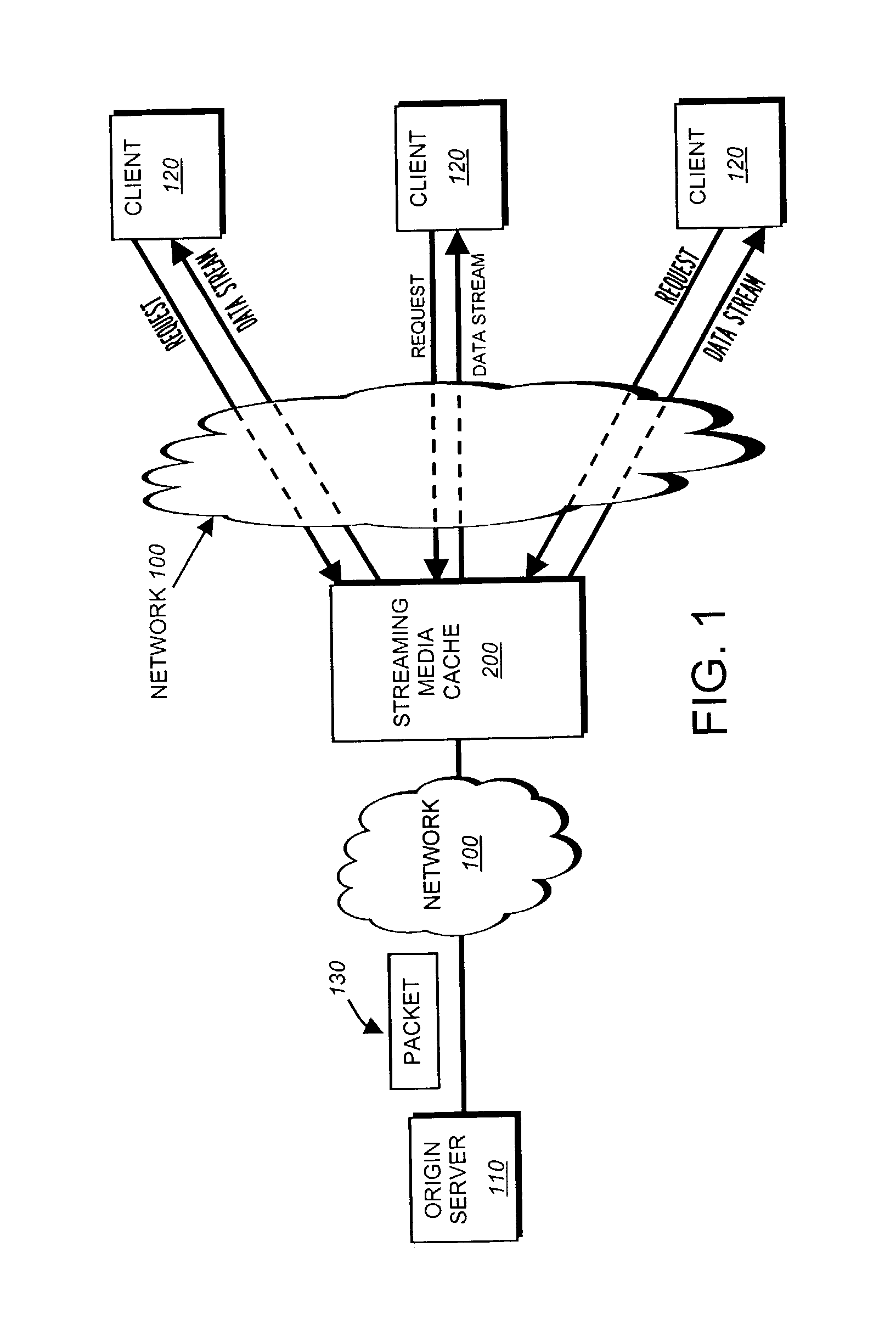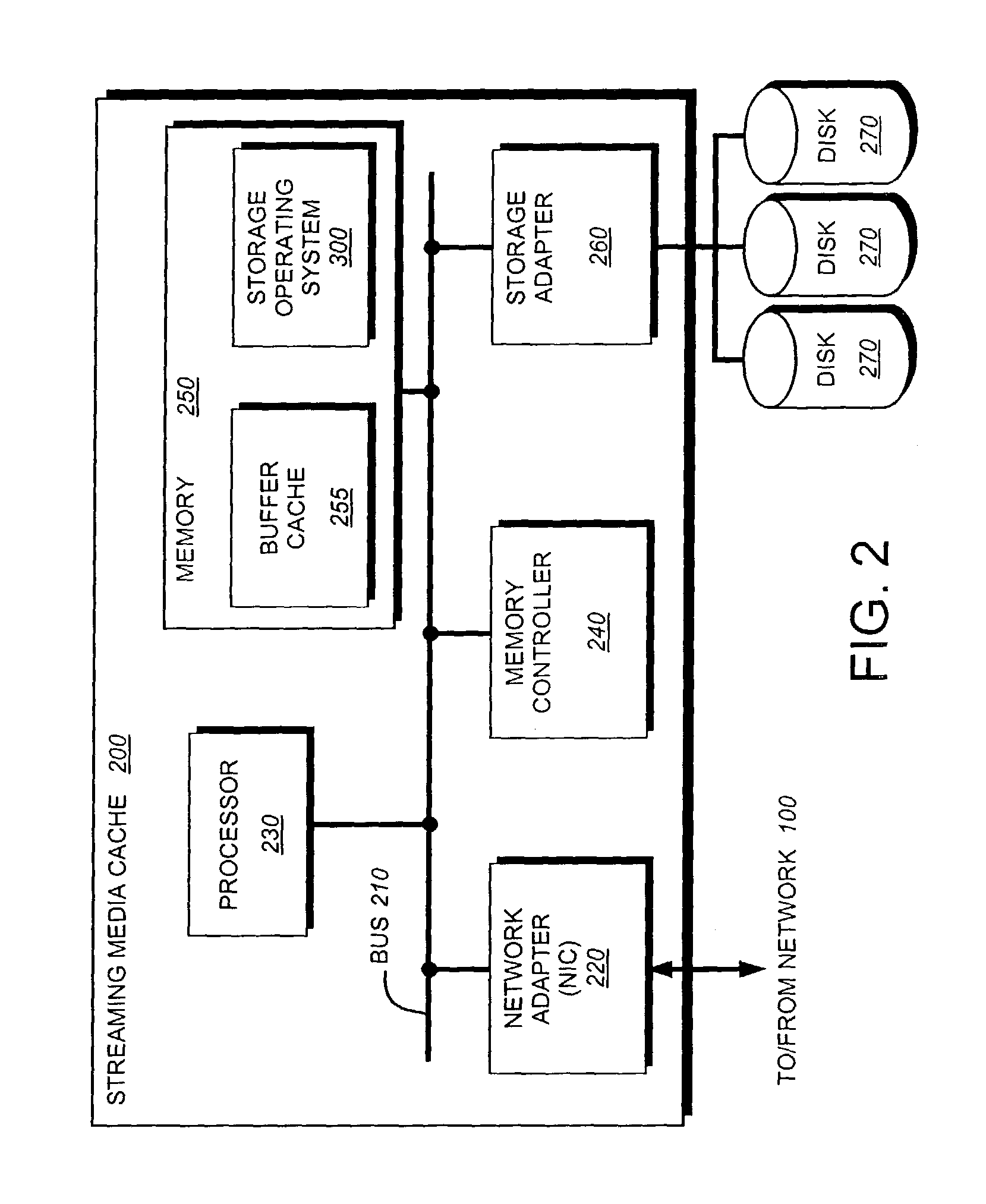Adaptively selecting timeouts for streaming media
a technology for streaming media and timeouts, applied in the field of streaming media, can solve the problems of consuming excessive resources and generating a large number of send times, and achieve the effect of maximizing the utilization of cpu bandwidth
- Summary
- Abstract
- Description
- Claims
- Application Information
AI Technical Summary
Benefits of technology
Problems solved by technology
Method used
Image
Examples
Embodiment Construction
A. Networking Environment
[0023]FIG. 1 illustrates a streaming media cache (server) 200 coupled to an origin server 110 and a plurality of clients 120 over a network 100. The streaming media cache typically communicates with the origin server and the clients by exchanging discrete data packets 130 over the network. As used herein, a data packet is broadly understood to be a unit of data transmitted over the network. As such, a data packet according to the invention may comprise one or more conventional data packets. Typically, the packets are formatted in accordance with predetermined communication protocols, such as the Transmission Control Protocol (TCP), User Datagram Protocol (UDP) and the Internet Protocol (IP). In this context, a protocol consists of a set of rules defining how packets are communicated. Each data packet generally comprises “payload” data appended to one or more network headers that define the packet's routing through the network.
[0024]The network 100 contains a...
PUM
 Login to View More
Login to View More Abstract
Description
Claims
Application Information
 Login to View More
Login to View More - Generate Ideas
- Intellectual Property
- Life Sciences
- Materials
- Tech Scout
- Unparalleled Data Quality
- Higher Quality Content
- 60% Fewer Hallucinations
Browse by: Latest US Patents, China's latest patents, Technical Efficacy Thesaurus, Application Domain, Technology Topic, Popular Technical Reports.
© 2025 PatSnap. All rights reserved.Legal|Privacy policy|Modern Slavery Act Transparency Statement|Sitemap|About US| Contact US: help@patsnap.com



